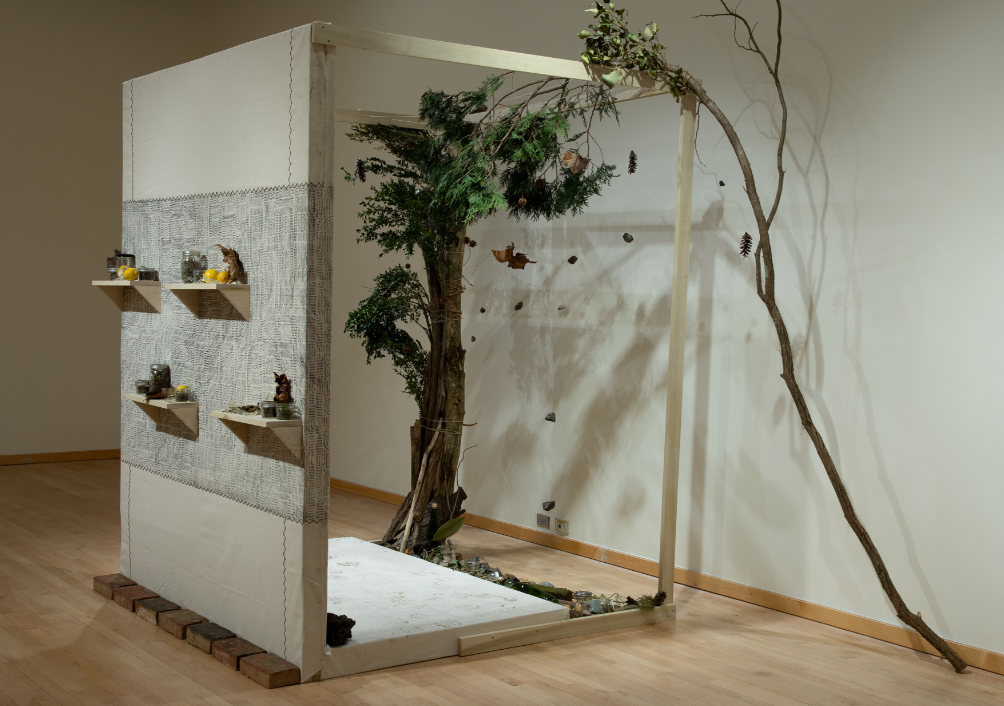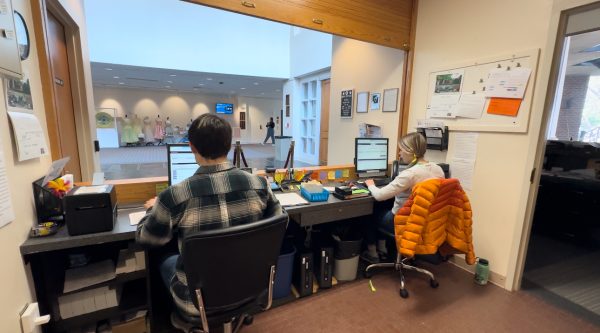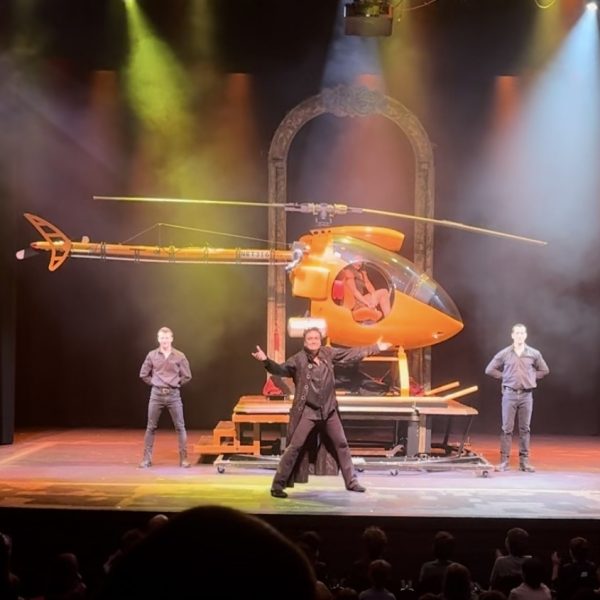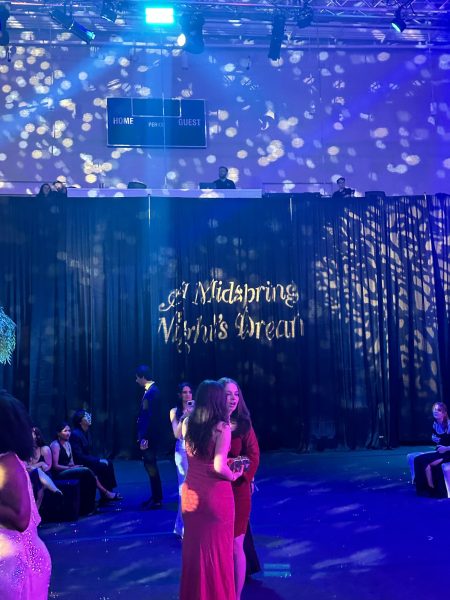Artist William Ransom collaborates with sculpture students
The Vermont-raised artist worked with students virtually to create the installation-based Staniar Gallery exhibit
March 4, 2021
Artist William Ransom worked with students in Professor Sandy de Lissovoy’s “Land and Passage”’ sculpture class to create the exhibit “Solastalgia: On Hold” which will run until March 19 in Staniar Gallery.
The title refers to the concept of solastalgia or “the sense of distress and uncertainty resulting in environmental change and degradation or slippage in societal foundations” according to the exhibit’s description.
Ransom discussed how unrest and tension appear as common themes in his work in a virtual artist talk on February 24.

He discussed his upbringing on a Vermont family farm with interracial parents and the ways his “blended heritage” and connections to land continue to affect him as a creator.
“There was an improvisational know-how that was bestowed to me by the environment and by my parents,” Ransom said.
Much of Ransom’s works utilizes natural materials like the slab of American Elm in Codeswitch: Mixtape from a tree on his family’s farm.
Since the once common American elm is now threatened by a disease brought on by global trade, Ransom calls it symbolic of “the loss of intercultural contamination.”
The exhibit also explores issues of identity and environment specific to Washington and Lee University.
The largest 3D piece in the gallery, titled Behind the W&L Facade: Not Unmindful of the Future but Avoidant of the Past was assembled by W&L students Clara Albacete, Maia Baldridge, Joey Dickinson, James Eaton, Arden Floyd, Catherine Hudson and Emmie McElroy.
For this piece, students explored the history of enslaved people that gets hidden by the “deceivingly glossy image” of the university.
The front of the installation features a reproduction of Lexington’s iconic brick pattern and shelves holding objects that represent the front-facing colonnade or brand of the university.
According to their artist statement, this symbol of the school’s “clean-cut, publicly presented, proudly traditional reputation” juxtaposes the back of the installation, filled with overlapping handprints in black paint and natural materials that represent the “often overlooked history of the enslaved people who lived and died here.”
The students used locally sourced materials from the area to draw inspiration.
“[We gathered] materials that have been unique witnesses to the region’s history, from a lemon that rested six feet above Stonewall Jackson in the Oak Grove Cemetery, to Roaring Run Iron Furnace’s slag.”
They also used materials from Woods Creek, Liberty Hall Ruins and back-campus trails.
“These are sections of the university that we have found to be a breath of fresh air from the sometimes suffocating, stratified student culture,” the statement said.
Joey Dickinson, ‘22 described the virtual collaboration experience.
“We Zoomed with William a few times— first for him to introduce the project, and then once we’d had a chance to explore and gather materials, to discuss our ideas,” Dickinson said.
“The seven of us synthesized everything we’d been thinking about individually, and William gave guidance on what he thought would work best alongside his pieces.”
Ransom’s hanging piece Ampersand features a wooden oval slab carved with the ampersand of the “W&L” logo without the W or L and painted “W&L Blue.”
Ransom said the piece was designed to make the viewer think about what removing the names of the school’s founders accomplishes and to think beyond the superficial changes that reckon with the university’s history of racism.
“Is there ever really such a thing as a blank slate?” Ransom asked while explaining this piece.
Ransom’s work acknowledges the difficulty and growing pains that come with change and the tension between two states of being.
“The charged space between two identities is a space of compression and resistance,” Ransom said, “but it can also be one of potential.”












